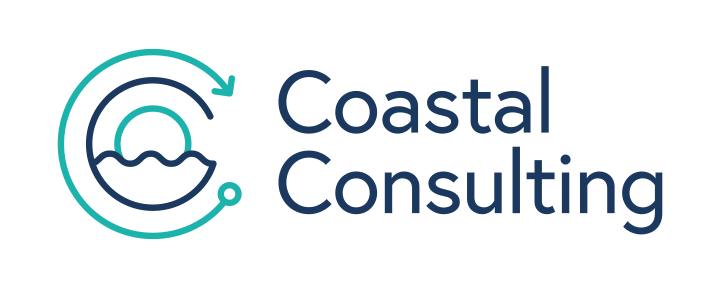Share this
Things to Know About Your Customer Before Integrating Hubspot and Salesforce
by Lauren Ryan on September 2022
You're probably excited to dive right in if you’ve landed on the HubSpot Salesforce integration to manage your marketing and sales alignment. But at Coastal Consulting, we’re big advocates for planning before setting up your integration. Without a plan, you’ll probably end up with a headache or two. Instead, a solid strategy means you’ll get to reap the benefits of your integration.
On that note, these are the four essential things you need to know about your customers as you prepare to implement your integration.
Let’s dive in.
4 key pieces of data you need before integrating HubSpot and Salesforce
Which contacts need to go where?
On a semi-related note, not every contact needs to be on both platforms. So you’ll need to figure out what contacts belong in each system.
There are many reasons why a contact would belong in HubSpot and not in Salesforce or vice versa. For example, you don’t want everyone who’s downloaded a resource to make their way to Salesforce. So you can set up an inclusion list so only prospects that fit certain criteria (like being an SQL) move over there.
Figure out who needs to go where before you integrate so you can select the sync settings that make the most sense.
What lifecycle stage are they in?
Without a clear sales path, you won’t know what type of automation you need. So you first need to figure out the stages your prospect goes through to become a customer.
With your stages, you’ll have a clear picture of the workflows and sequences you can create. And knowing what workflows you need will inform your decisions regarding the properties and objects you want to sync between Salesforce and HubSpot.
The naming conventions are different between each system. In Salesforce, you have leads, which is any contact that has yet to convert. These are different from contacts, which are paying customers. On the flip side, you only have contacts in HubSpot. They’re categorized based on their lifecycle stage.
As we mentioned earlier, you don’t need every contact on both platforms. But you do need to know where each stands in the lifecycle to target them appropriately. Your marketing and sales teams can use a lead scoring model to create effective sequences and automation to connect with anyone from prospects to customers — an essential function of your integration.
Lead scoring is using data to qualify a prospect’s likelihood of becoming a paying customer. Creating a lead scoring model helps your sales team prioritize their outreach, increasing your conversion and driving revenue.
What are the properties you need to map?
Your Salesforce and HubSpot fields aren’t identical. So you’ll have to map any HubSpot field as a picklist in Salesforce.
In theory, you could sync every property. But really, why would you? Before you dive into your HubSpot Salesforce integration, evaluate your existing data and decide which contact fields are truly relevant. This will save time and ensure that your data is clean and serves a purpose — rather than cluttering your systems.
Examples of important properties you’ll need:
- Contact name
- Contact email
- Contact owner
- Company name
- Company’s industry
- Company size
- Annual revenue
- Location
- Became a lead date
- Became a customer date
What properties you need will depend on your specific business. But in general, get rid of it if it doesn’t serve a clear purpose for your marketing or sales teams.
What communication do they need?
Salesforce allows you to send sales emails. You can also create campaigns. But keep in mind that campaigns are different in HubSpot and Salesforce. A campaign in Salesforce is a list of leads and contacts that get specific marketing communication. On the flip side, a campaign in HubSpot is a set of assets related to a specific marketing initiative.
In addition, you can send marketing emails and offer customer support from HubSpot. You can also create a knowledge base, which is great for customers looking for DIY solutions — and also great for SEO.
All this to say, each platform serves a different role in your client-facing communication. So it’s worth considering this before you implement the integration to have a solid action plan.
The HubSpot Salesforce integration is more than a tech setup
You can definitely implement your integration without a clear objective for each component. But this will be costly and become an endless headache down the road.
At Coastal Consulting, we approach your HubSpot Salesforce integration on two fronts: The tech and the strategy. Together, these components result in the most bang for your buck.
The best news? We believe companies shouldn’t need to depend on external partners to manage their HubSpot Salesforce integration. Your team is perfectly able to implement and run your software without relying on third-party providers.
Enroll now in the first HubSpot Salesforce Integration course.
Share this
- March 2025 (1)
- January 2025 (3)
- December 2024 (2)
- September 2024 (2)
- August 2024 (2)
- July 2024 (3)
- June 2024 (1)
- May 2024 (1)
- February 2024 (1)
- January 2024 (1)
- December 2023 (1)
- November 2023 (1)
- October 2023 (5)
- September 2023 (2)
- June 2023 (1)
- April 2023 (2)
- March 2023 (2)
- February 2023 (5)
- January 2023 (8)
- December 2022 (7)
- November 2022 (10)
- October 2022 (2)
- September 2022 (11)
- August 2022 (4)
- July 2022 (2)
- June 2022 (3)
- May 2022 (8)
- April 2022 (6)
- March 2022 (4)
- February 2022 (4)
- January 2022 (6)
- December 2021 (4)
- November 2021 (4)
- October 2021 (4)
- August 2021 (1)
- July 2021 (7)
- June 2021 (15)
- May 2021 (1)
- March 2021 (2)
